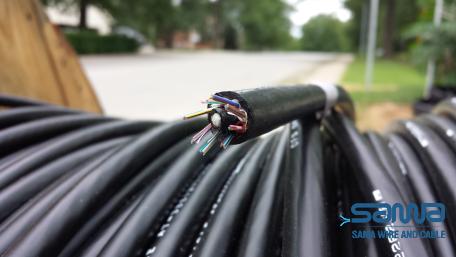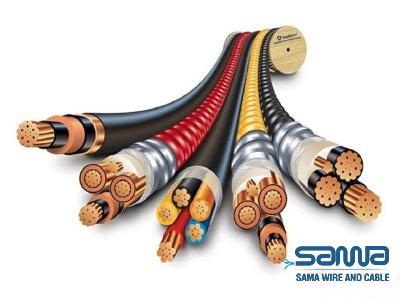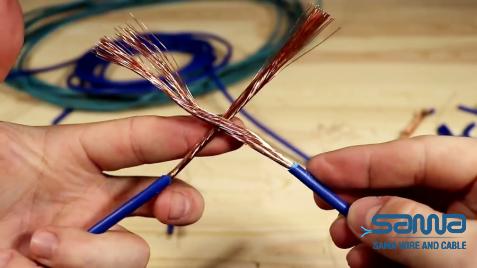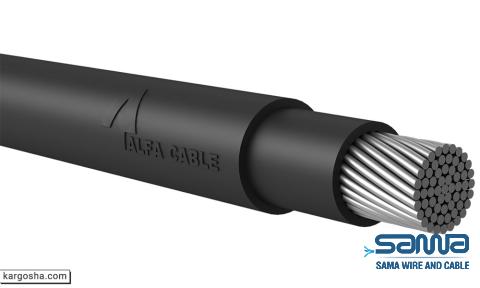The welding Wire Sizing Calculator provides a very easy and quick solution to your problem of calculating wire and cable sizing in pump applications in golf courses, landscaping projects and agriculture. The requirements of the National Electrical Code (NEC) and local codes must be always followed. source voltage – The selections in the calculator are the most common and nominal. Phase – Usually single-phase or three-phase. For single-phase, three conductors are required, while for three-phase circuits, four conductors are required. According to NEC Article 122-250, equipment ground is one such conductor whose size can be reduced. A Paige Electric agent can assist you decide your correct needs. amplifier – The amperage drawn by the load should be obtained from the equipment manufacturer. For motors, the current should be obtained from NEC tables 430-148 (single phase) and 430-150 (three phase).
Depending on the numbers connected to the calculator, NEC guidelines should be followed. This calculator uses the method described in Australian Standard AS/NZS 3008.1.1 to determine the minimum cable size and uses the exact voltage drop method. Note that the operating temperature of the cable is not considered, and the short-circuit performance of the cable is ignored Voltage (V) – This is the voltage of the power supply, default is 230 V for single phase supply and 400 V for three phase supply. Phase – Select the phase arrangement as single-phase, three-phase, two-phase or DC. Load – Specify the load value, whether it is amps, kilowatts, kilovolt-amps, or horsepower. Note that for three-phase loads, this must be the current of the phase with the highest load. Maximum Voltage Drop (%) – Automatically adjusts the cable size to meet the required maximum voltage drop. See our article Voltage Drop Limits for Low Voltage Installations. Power Factor – Enter the power factor of the load (assuming delay). This calculator considers the power factor when calculating the voltage drop, which is more accurate.
Electrical Wire and Cable Size
The most common sizes for residential work are sizes 14 and 12. Larger appliances such as electric stoves, electric water heaters, electric clothes dryers, and central air conditioners often use 10, 8, or even 6 wires. If you are adding an outlet, you must use the same portable wire gauge as the existing wiring. wire gauge the most common sizes for residential work are 14″ and 12″. Larger appliances such as electric stoves, electric water heaters, electric clothes dryers, and central air conditioners often use 10, 8, or even 6 wires. All cables are rated to carry a certain amount of amperage, meaning that the load placed on them should not exceed what they can safely carry. Cable size for home lighting circuits is usually 1mm or 1.5mm twisted pair and ground (aka two core and ground). 1mm should be fine in most cases, but it depends on the number of lights in the circuit and the length of the cable. If a large number is required or the tracking distance is long, a 1.5mm cable should be used to account for the power requirement and voltage drop.
In most domestic situations, the cable size for ring or radial trunk tanks, twisted pair and ground cable is 2.5 mm. The size of the cable used for the outlet must be larger than the size of the cable used for the lighting circuit because it must withstand a greater load due to the number of different devices with different power requirements that may be connected to the power supply. In addition to the 3 common cable sizes of 1, 1.5 and 2.5mm twisted pair and ground wire, there are several larger sizes including 4mm, 6mm, 10mm and 16mm. These are mostly used for devices and objects that require more power to operate or for special uses. Larger sizes of cables include 25, 35, 50, 70, 95, 120, 150 to 1000 mm2, totaling over 20 different sizes. The cross section of the ground wire is 1 mm in 1.5 mm cables and 1.5 mm in 2.5 mm cables. As we mentioned above, how to determine the size of a cable is determined by the size of the wire it holds, for example a 0.1.5mm cable will hold a 1.5mm wire. In most cases, the size of the cable should be printed on the jacket, but otherwise, you must calculate the diameter of the wire to determine the size, which means calculating the area of a circle, such as a circular wire.
Electrical Cable Size Calculator
To calculate the cable size, divide the voltage across the cable by the target current. For example, if your line voltage current is 150 volts and your target is 30, divide by 150/30. This gives you a target resistance of 5, which is required. There are various sizes of cables on the market. However, you will need a power cord size calculator to determine the right size for your application. This will help you know which size is best for your needs. Calculated according to IEC and British Standards. Use a power factor of 0.8 when calculating KW. 230V and 415V voltage drop cable measurement calculator. The power cord size chart will help you make a better, more informed decision when choosing cables. These charts will help determine the required cable size for your application. For example, if an undersized cable is used, it may melt from the high current. Therefore, a cable size chart can help determine size and diameter. The smaller the diameter, the greater the resistance to the flow of energy. Medium voltage cables range in size from 1KV to 100 VK. They have highly engineered joints that must be cut correctly. If not cut properly, they can explode and injure people or equipment. Due to the increasing demand for voltage levels, the concept of Mv cable size was introduced. As demand increased, so did the variety. Very low and super high classifications are also available these days Cables with different resistance values are used for different applications, so a cable sizing calculator helps determine the required cable size to prevent any mishaps. The formulas for sizing power cables can be tedious and complex, so we give you the easiest way to calculate the right size for your application. We use the Bs7671 cable sizing method to calculate the size, which is the UK standard for ampacity of single-core armoured XLPE insulated copper cables.

Electrical Wire Size Calculator
Amps – Enter the maximum current that will flow through the circuit in amperes. For motors, it is recommended to multiply the FLA nameplate by 1.25 to determine the Houston wire size. Phases – Select the number of phases of the circuit. It is usually single phase or three phases. For single-phase circuits, three wires are required. For a three-phase circuit, four wires are required. One of the wires is the ground wire that can be shortened. To calculate the size of the ground wire, use the ground wire size calculator. Insulation – Select the thermal grade of wire insulation. Conductor – Select the material used as the conductor in the wire. Common conductors are copper and aluminum. Installation – Select the installation method of the circuit. This is usually in pipes (cable trays or conduits), in cables, buried in the ground or in the open air. Voltage Drop – Select the maximum voltage drop percentage of the source. It is recommended that the voltage drop is not more than 5%. Spacing – Enter the one-way length of the circuit wires in feet. Note: It is recommended to check the ampacity of the conductors after calculating the voltage drop. Always use the total circuit length for calculations. If your application requires more complex calculations, consult an engineer.  Conductive strength is calculated by not exceeding a specific temperature rise under a specific electrical load. The heating of the conductors can be directly attributed to the I2R losses in the circuit. The length of the conductor is proportional to its resistance. However, the cross-sectional area of the conductor can also be changed to change the resistance of the conductor. By increasing the cross-sectional area of the conductor (or increasing the size of the wire), the resistance decreases and allows for an increase in the current carrying capacity. Voltage drops can be a problem for engineers and electricians when measuring wire for long wires. Using a very small gauge wire or a very long conductor can cause a voltage drop in the circuit. The motor wire must be large enough to handle the inrush current and handle the full load current of the motor. Conclusion All information mentioned above providing to the buyers who want to know and buy wires and communication cables and Our vision is to be a standard for customized products and quality services so that we can build a good brand image of our company in the national and international market with competitive prices and cheap shipping services. Protect the quality of the environment. Encourage innovation / creativity. For more information kindly visit our site.
Conductive strength is calculated by not exceeding a specific temperature rise under a specific electrical load. The heating of the conductors can be directly attributed to the I2R losses in the circuit. The length of the conductor is proportional to its resistance. However, the cross-sectional area of the conductor can also be changed to change the resistance of the conductor. By increasing the cross-sectional area of the conductor (or increasing the size of the wire), the resistance decreases and allows for an increase in the current carrying capacity. Voltage drops can be a problem for engineers and electricians when measuring wire for long wires. Using a very small gauge wire or a very long conductor can cause a voltage drop in the circuit. The motor wire must be large enough to handle the inrush current and handle the full load current of the motor. Conclusion All information mentioned above providing to the buyers who want to know and buy wires and communication cables and Our vision is to be a standard for customized products and quality services so that we can build a good brand image of our company in the national and international market with competitive prices and cheap shipping services. Protect the quality of the environment. Encourage innovation / creativity. For more information kindly visit our site.














Your comment submitted.